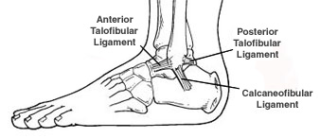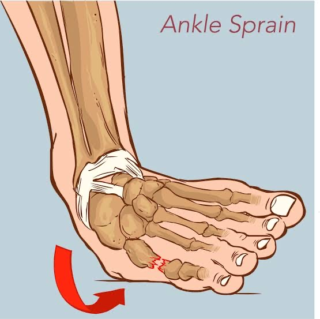Conditions
Medical Conditions We Treat ..
Joints & Bones
Frozen Shoulder (Adhesive Capsulitis)
Neck & Spine
Degenerative Disc Disease(DDD)
Herniated Discs(Bulging Discs)/Slipped Disc
Muscles
Ankle Sprain
An ankle sprain is an injury to one or more ligaments in the ankle, usually on the outside of the ankle. Ligaments are bands of tissue—like rubber bands—that connect one bone to another and bind the joints together. In the ankle joint, ligaments provide stability by limiting side-to-side movement.

Some ankle sprains are much worse than others. The severity of an ankle sprain depends on whether the ligament is stretched, partially torn or completely torn, as well as on the number of ligaments involved. Ankle sprains are not the same as strains, which affect muscles rather than ligaments.
Grade of ankle sprains by how severe they are:
- Mild (grade I).Your ligaments are stretched but not torn. Your ankle still feels stable. You may have some pain and stiffness.
- Moderate (grade II).One or more ligaments are partially torn. The joint isn’t totally stable, and you can’t move it as much as usual. You have swelling and moderate pain.
- Severe (grade III).One or more ligaments are totally torn, and your ankle is unstable. You have a lot of pain and can’t move it.
Causes
Sprained ankles often result from a fall, a sudden twist or a blow that forces the ankle joint out of its normal position. Ankle sprains commonly occur while participating in sports, wearing inappropriate shoes or walking or running on an uneven surface.
Sometimes ankle sprains occur because a person is born with weak ankles. Previous ankle or foot injuries can also weaken the ankle and lead to sprains.


Symptoms
The symptoms of ankle sprains may include:
- Pain or soreness
- Swelling
- Bruising
- Difficulty walking
- Stiffness in the joint
Ankle fractures are common injuries most often caused by the ankle rolling inward or outward. Many people mistake an ankle fracture for an ankle sprain, but they are quite different and therefore require an accurate and early diagnosis. They sometimes occur simultaneously.
Risk Factors
Certain people are more likely to sprain their ankles. Women, children, and teenagers tend to have more sprains. You might also be at higher risk if you:
- Play sports, especially on an indoor court
- Have balance problems
- Wear high heels or shoes that don’t fit well
- Have weak or stiff ankles, such as because of a previous injury
Diagnosis
In evaluating your injury to the foot and ankle, the physiotherapist will obtain a thorough history of your symptoms and examine your foot. X-rays or other advanced imaging studies may be ordered to help determine the severity of the injury.
